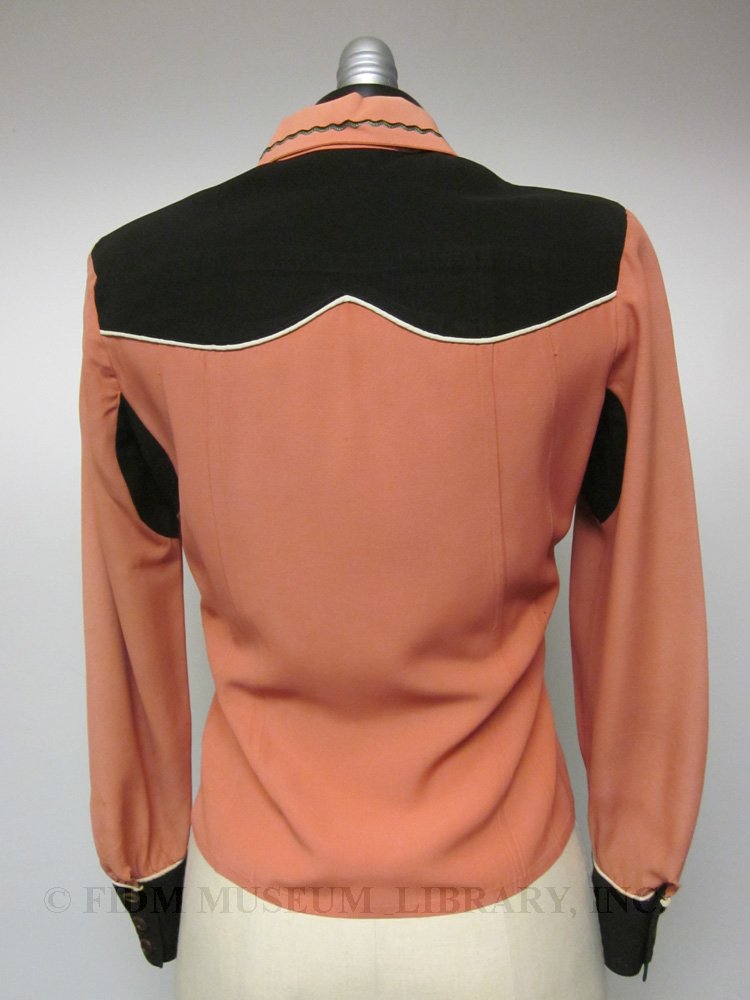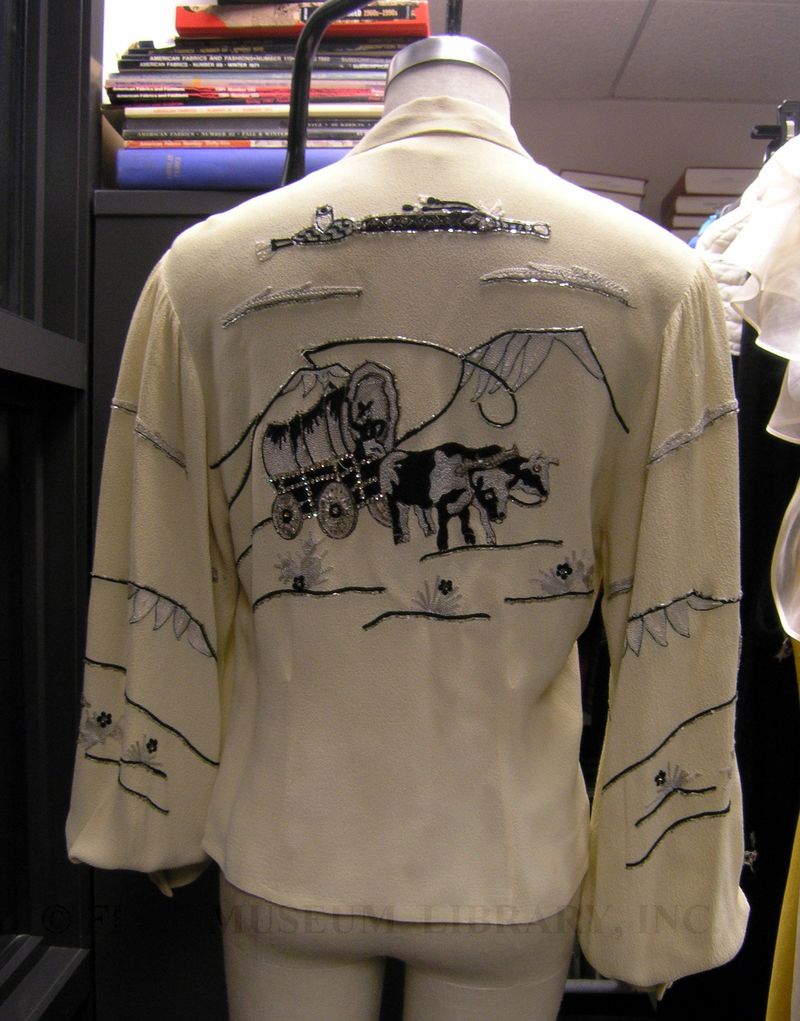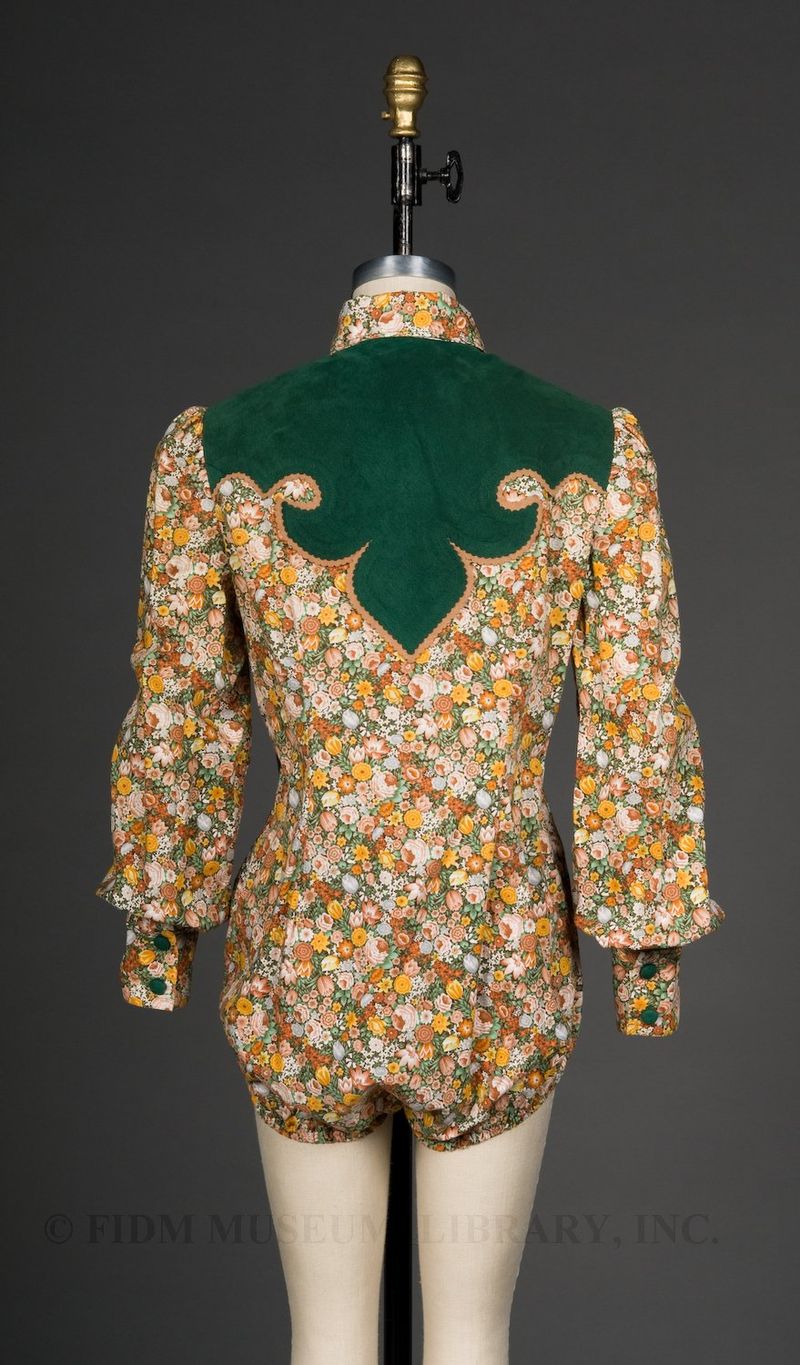Ranch Dressing, Part 1
The American West has been a powerful influence on fashion since the 1920s, when Hollywood films romanticized the cowboy myth and city slickers from the East Coast traveled west to experience ranch living as "dudes": tourists who dressed the part without suffering the hardships of life on the range. "The trend that gained momentum in the 1930s after the Great Depression began as a method of supplemental income for ranchers and became a booming trade for vacationers and couples seeking divorce," legal in Nevada after a six-week residence.1 Hollywood films set on dude ranches and "divorce ranches" (like 1939's The Women) fueled the fad and its attendant fashions
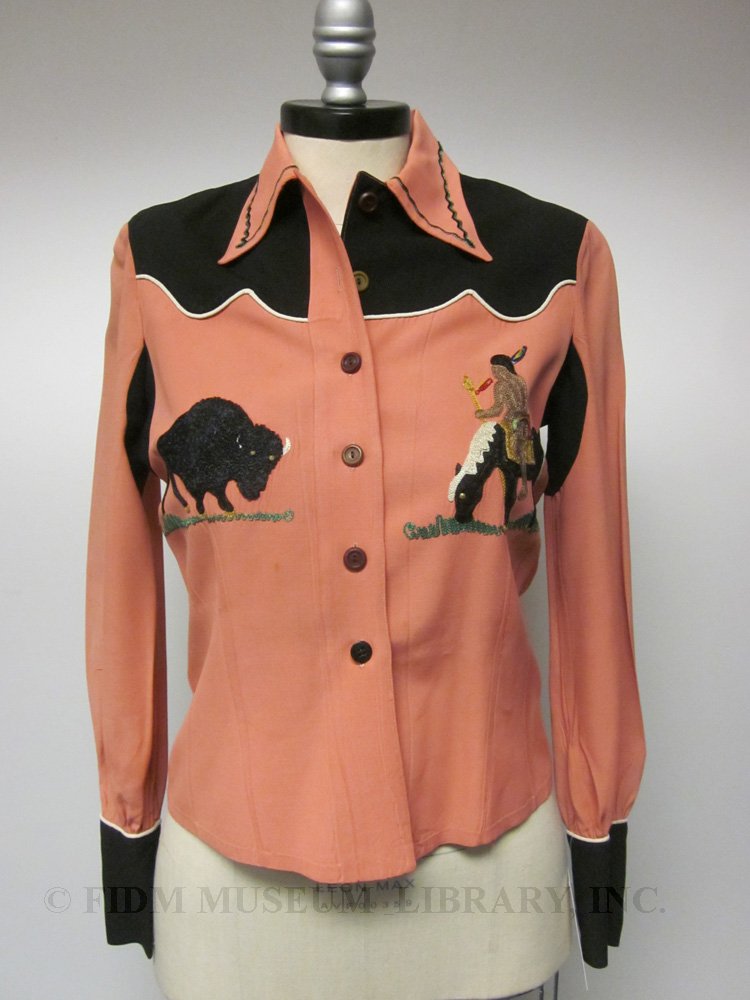 Shirley Originals
Shirley Originals
c. 1946
Museum Purchase
2014.5.11
"True Western chic was invented by cowboys, and the moment you veer from their tenets, you are lost," Vogue proclaimed in 1935. "Your uniform for a dude ranch or a ranch near Reno is simple-but-severe blue jeans or Levis, turned up at the bottom once, laundered before wearing (to eliminate stiffness), cut straight and tight fitting, worn low on the hips, in the manner of your favourite dude wrangler. With these jeans go a simply tailored flannel or plaid cotton shirt, or possibly a Brooks sweater; a plain silk kerchief knotted loosely; a studded leather belt; high-heel Western boots; a Stetson hat; and a great free air of bravado."2
In 1934, Levi Strauss & Co.introduced its first "Lady Levi's"--jeans tailored for the female figure--as well as "Dude Ranch Duds," a line of Western-style leisure wear for both sexes, designed to capitalize on the popularity of dude ranch vacations. Previously, Levi's had been sold primarily in the Western states; now the firm expanded its market beyond the West, allowing would-be dudes on the East Coast to purchase their ranch wardrobes before leaving home.3 A whole new audience discovered denim, laying the foundation for a global empire.
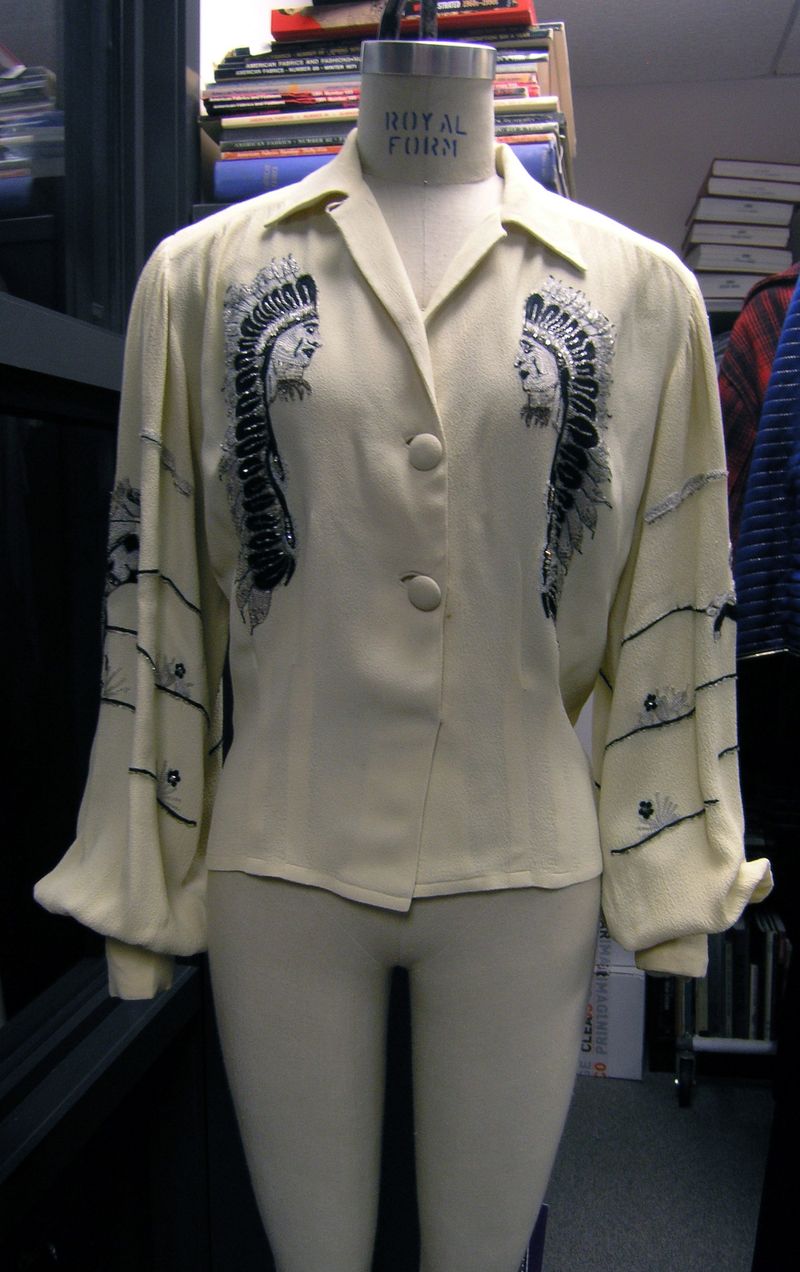 Addie Masters, California
Addie Masters, California
c. 1939
Museum Purchase
2009.5.67
The plaid or gingham shirts and cardigans adopted by early female "dudines" or "dudettes" were soon replaced by female versions of a man's Western or "Rodeo" shirt. They retained their contrasting yokes, piping, and cowboy-themed embellishments, but came in feminine colors and patterns, with blouson sleeves, princess seams, fabric-covered buttons, and metallic embroidery and beading.
By the late '50s, the dude ranch was in decline, though cowboys were more popular than ever thanks to television shows like Gunsmoke and Have Gun Will Travel. Levi's duly renamed its "Dude Ranch Duds" line "Western Wear."4 Sportswear manufacturers--many of them based in California--continued to produce Western-style clothing "appealing both to the 'dude' who rides a horse and the one who rides the station wagon to and from steak fries."5 Indeed, the lure of the West has never really gone out of fashion, as our next blog post will illustrate. Perhaps that's because, as Vogue put it, "deep down in every American's breast . . . is a longing for the frontier, perhaps the most powerful of American motivations."6
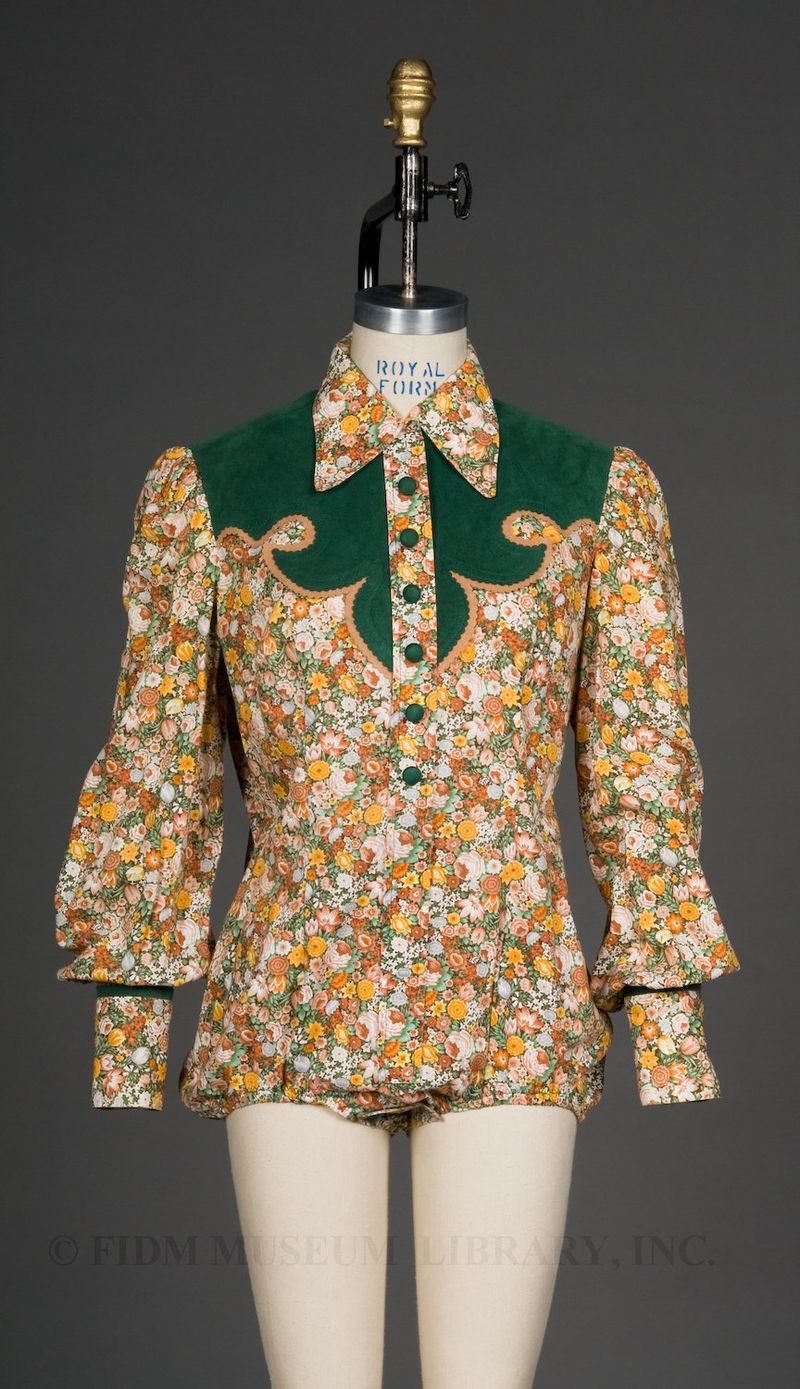 Bodyshirt (no label)
Bodyshirt (no label)
c. 1968-1972
Gift of Women Helping Women
2001.788.3
1Mary D. Doering, Patricia Hunt-Hurst, and Heather Vaughan Lee, eds., Clothing and Fashion: Vol. 1: American Fashion from Head to Toe (Santa Barbara, CA: ABC-CLIO, 2016), p. 322.
2Vogue, May 15, 1935.
3Lynn Downey, Levi Strauss & Co. (Charleston, S.C.: Arcadia Publishing, 2007), p. 59.
4Downey, p. 79.
5Women's Wear Daily, December 17, 1946.
6Vogue, May 15, 1935.
